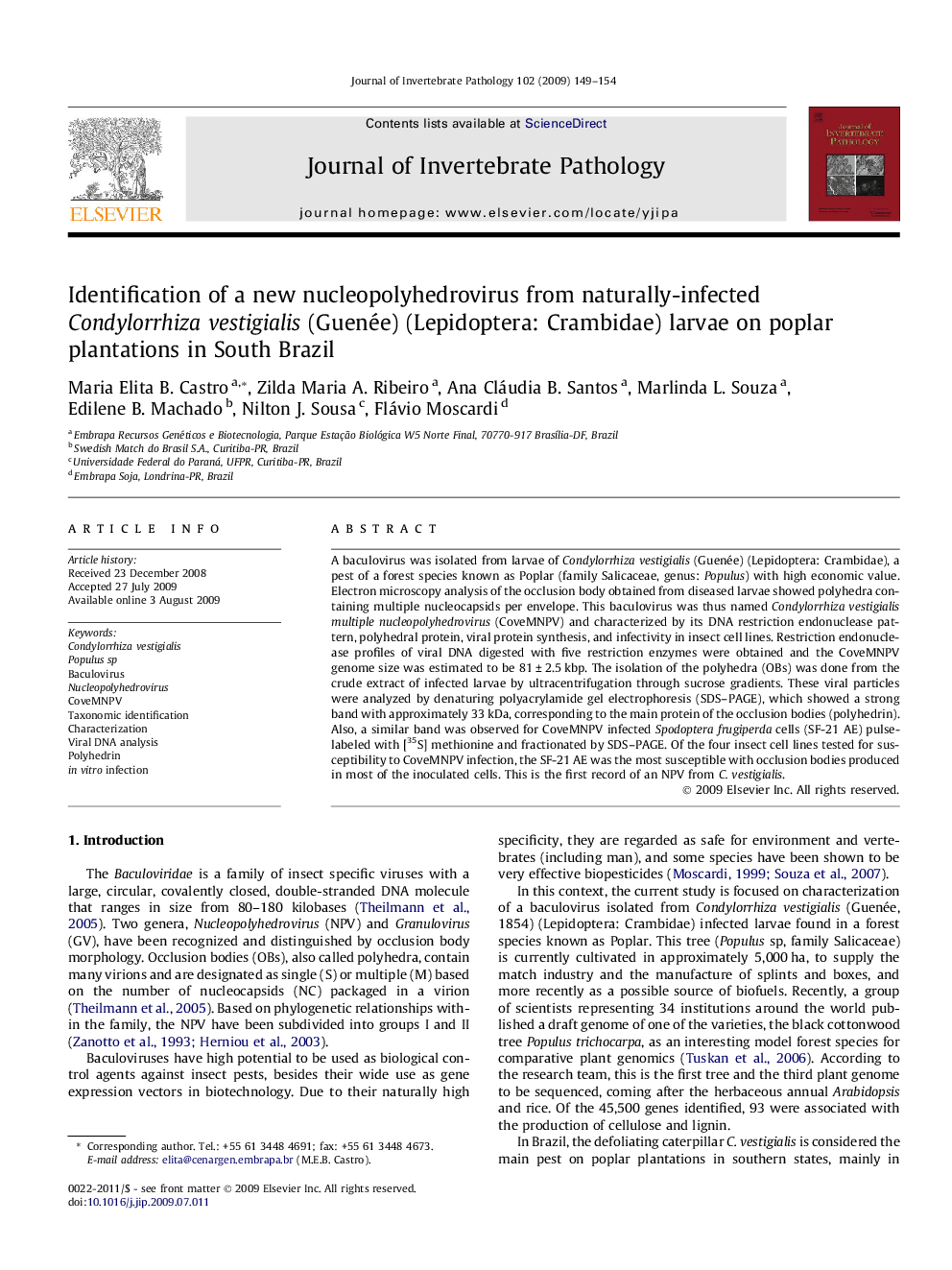| Article ID | Journal | Published Year | Pages | File Type |
|---|---|---|---|---|
| 4558014 | Journal of Invertebrate Pathology | 2009 | 6 Pages |
A baculovirus was isolated from larvae of Condylorrhiza vestigialis (Guenée) (Lepidoptera: Crambidae), a pest of a forest species known as Poplar (family Salicaceae, genus: Populus) with high economic value. Electron microscopy analysis of the occlusion body obtained from diseased larvae showed polyhedra containing multiple nucleocapsids per envelope. This baculovirus was thus named Condylorrhiza vestigialis multiple nucleopolyhedrovirus (CoveMNPV) and characterized by its DNA restriction endonuclease pattern, polyhedral protein, viral protein synthesis, and infectivity in insect cell lines. Restriction endonuclease profiles of viral DNA digested with five restriction enzymes were obtained and the CoveMNPV genome size was estimated to be 81 ± 2.5 kbp. The isolation of the polyhedra (OBs) was done from the crude extract of infected larvae by ultracentrifugation through sucrose gradients. These viral particles were analyzed by denaturing polyacrylamide gel electrophoresis (SDS–PAGE), which showed a strong band with approximately 33 kDa, corresponding to the main protein of the occlusion bodies (polyhedrin). Also, a similar band was observed for CoveMNPV infected Spodoptera frugiperda cells (SF-21 AE) pulse-labeled with [35S] methionine and fractionated by SDS–PAGE. Of the four insect cell lines tested for susceptibility to CoveMNPV infection, the SF-21 AE was the most susceptible with occlusion bodies produced in most of the inoculated cells. This is the first record of an NPV from C. vestigialis.
